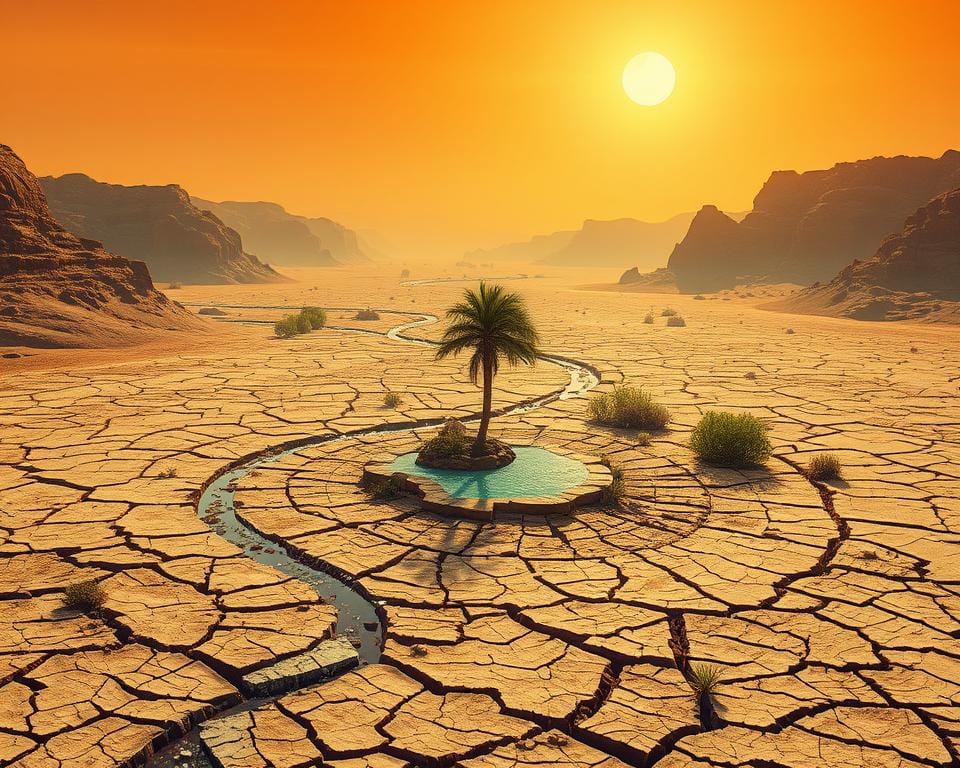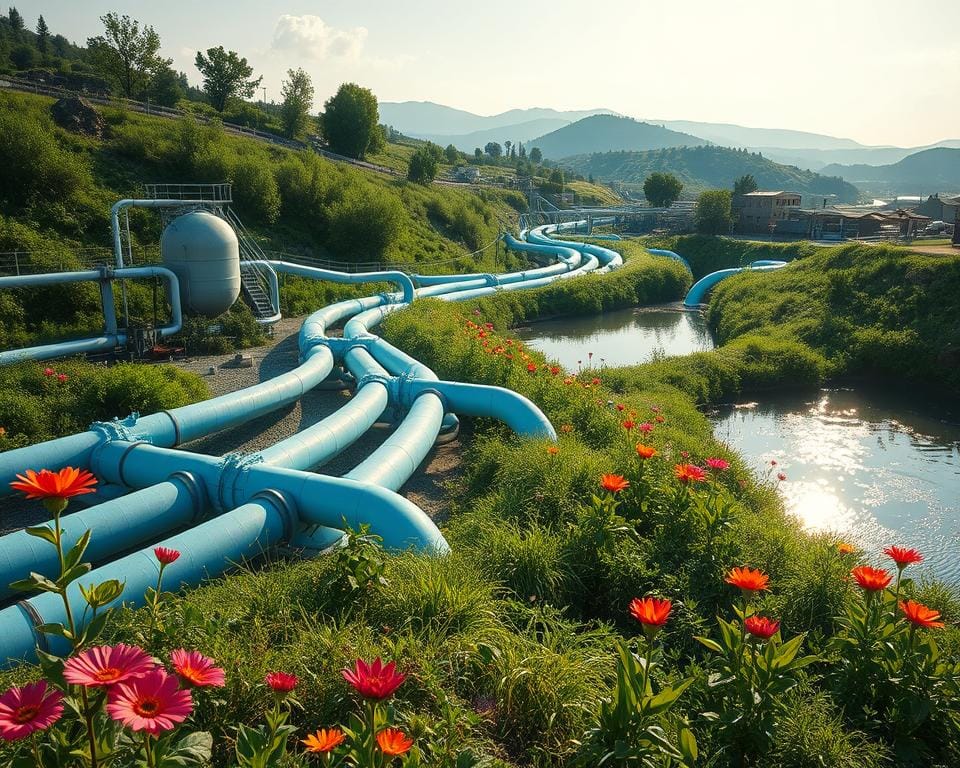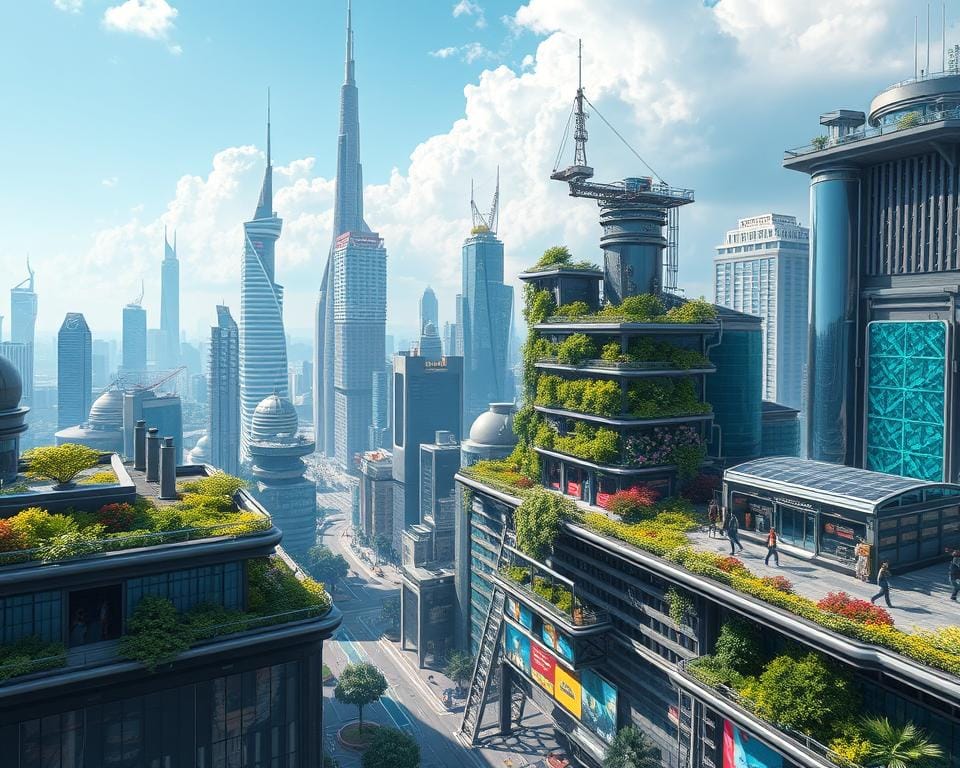Today, over 40% of people worldwide face water scarcity. This issue grows as cities expand, and farms need more water. Also, climate change is making water even scarcer. Finding new ways to manage water is crucial for our future.
Desalination is one key method that turns sea water into drinking water. It’s making a big difference in fighting water shortages. Recycling water is another great way to use water again. This helps cut down the need for fresh water. Catching rainwater is a simple but effective way to boost water supplies when it’s dry. It also helps us depend less on other water sources.
Managing water well is very important because 70% of deaths from natural disasters are linked to water. With smart management and new tech like reverse osmosis, we can protect our water for the future. These innovative strategies are changing how we handle water. They bring hope and lasting solutions to people everywhere.
Introduction to Water Scarcity
Water scarcity is a growing global problem that links to the water crisis and uneven water distribution. Over half of the world faces water scarcity for at least one month each year. Shockingly, 785 million people lack basic drinking water services. This worsens the global health crisis. Clean water, for many, is a luxury, not a basic need.

Climate change worsens the situation by changing rainfall patterns. This can lead to less water. For example, a slight temperature increase could leave 500 million more people with 20% less water. Sea levels rising also cause saltwater to mix into freshwater. About 2.3 billion people live in areas with water stress, making it urgent to find solutions.
Two billion people have no improved sanitation. Three billion can’t wash their hands properly. This causes nearly 829,000 deaths a year from diseases like diarrhea. This affects 297,000 children under five, showing the urgent need for clean water and better water management.
But, there is hope. Water-use efficiency went up by 10% between 2015 and 2020. Over 600 million people got access to safe drinking water by 2020. Yet, 1.2 billion people live in areas with not enough water. They often live in dry places. To learn more about solving these problems, check distillation of salt water.
In the US, about 20% of water is lost without earning revenue, showing big inefficiencies. Mexico City, home to over 20 million, shows how bad it can get. Despite getting lots of rain, nearly 90% faced a severe drought in early 2024. They almost ran out of water.
The water crisis needs many types of solutions, including environmental and economic ones. Higher water prices can help reduce waste and fund water improvements. Also, 70% of freshwater goes to farming, so better irrigation can save a lot of water.
The World Economic Forum lists water crises as a top global risk. It’s clear that sustainable water management and new technologies are vital. By working on these areas, we aim for a future where everyone has clean water.
Desalination: Turning Seawater into Drinking Water
Desalination can solve water shortages by turning seawater into drinkable water. This seawater conversion process is key as our freshwater supplies decrease. We’ll look at how desalination works, its benefits and drawbacks, and how it’s used now and in the future.
How Desalination Works
There are a few ways to remove salt and minerals from seawater, making it fresh. Some common methods include:
- Reverse Osmosis: This popular method pushes seawater through a fine membrane to remove salt.
- Boiling and Condensation: By heating seawater, steam is made then cooled into freshwater.
- Electrodialysis: This uses electricity to pull salt ions out of seawater.
- Filtration: Filters catch salts and dirt in seawater.
The Carlsbad Desalination Plant in San Diego uses reverse osmosis. It makes 50 million gallons of fresh water every day. This helps over 500,000 people in the area.
Advantages and Disadvantages
Desalination has many benefits, such as:
- Abundant Resource: With oceans full of salt, we have a huge source for making fresh water.
- Drought Resistance: It can make water all the time, even in dry areas. It’s very important for places that don’t get much rain.
- Reliable Supply: It helps keep our fresh water going even as more people need it and our usual sources get smaller.
But, there are downsides too, like:
- High Cost: Desalination plants are expensive to build and run. In San Diego County, desalinated water costs about $2,200 per acre-foot. That’s almost double the price of imported water.
- Energy-Intensive: Making fresh water this way uses a lot of energy, like running a fridge all day. This often needs fossil fuels, which can harm the environment.
- Environmental Impact: Using so much energy and dealing with leftover salt water, called brine, can hurt the environment if not managed well.
Current and Future Applications
Desalination is widely used in the Middle East. Places like Melbourne and Israel depend on it for water. Countries facing severe water scarcity, like Pakistan and Algeria, are also using it.
Thanks to new ideas in reverse osmosis, it’s getting cheaper and more efficient. This helps coastal and island communities with little fresh water. The leftover brine can even be turned into useful things like salt for businesses.
With ongoing improvements, desalination plants could meet our growing need for water in a sustainable way. Right now, around 20,000 plants supply water to over 300 million people every day.
Water Scarcity Solutions in Action: Water Recycling
Water scarcity needs new ideas, and water recycling is key for keeping water sustainable. It treats used water for uses like watering crops or for drinking, showing how vital water reuse and conservation are.
Techniques of Water Recycling
There are many ways to recycle water. Homes can reuse sink and shower water for toilets through simple greywater systems. Big treatment plants can make wastewater drinkable again. These methods are crucial for better water use and for water treatment in many places. To learn more, check out this informative article on water reuse.
Benefits and Implementation
Water recycling has several advantages. It lessens reliance on rain, giving a steady water supply. It stops saltwater from entering local waters. Also, it saves fresh water, very important for dry places.
Putting these solutions to work needs careful planning and teamwork. For example, Orange County Water District in California leads in water recycling. They provide clean water and teach people about its benefits. It’s all about earning people’s trust. In Puerto Rico, greywater helps irrigate San Juan, easing the demand for fresh water.

In Arizona, the Central Arizona Project shows how big water systems help recycle water. The state also limits new builds that rely only on groundwater. This encourages saving water and using different water sources.
| Region | Initiative | Impact |
|---|---|---|
| Orange County, CA | Advanced water treatment plant | Provides potable recycled water, builds community trust |
| San Juan, PR | Greywater systems for irrigation | Reduces strain on urban freshwater resources |
| Phoenix, AZ | Centralized water delivery systems | Supports comprehensive water recycling |
| Arizona State | Restrictions on groundwater-dependent housing | Promotes water conservation and source diversification |
Rainwater Harvesting: Simple and Effective
Rainwater harvesting is a simple, affordable method that collects rain to use later. It’s an efficient and green way to store water. With a small investment, you can set up a system. Use barrels for watering gardens or build complex systems for home use.
Collecting rainwater from rooftops is popular in cities. It helps reduce runoff and protects the environment. By using this water for things like irrigation, we ease the demand on city water supplies and help nature.
Adopting rainwater harvesting can also save money. Homes and businesses can reduce their water bills. In areas with high water costs, using rainwater for farming, animals, and homes makes sense.
It also helps increase groundwater. Allowing rainwater to soak into the earth boosts water levels underground. With over a billion people facing water shortages, harvesting rainwater is a smart move. By 2030, water scarcity could affect nearly half the planet, according to the United Nations.
Some places offer incentives for rainwater harvesting, like Tucson, Arizona. Rules about rainwater use vary internationally. For example, Queensland, Australia requires rainwater tanks in new houses. But Colorado used to have rules against collecting rainwater.
If you’re interested in saving water yourself, there’s a lot of info out there. Check out this article for tips on starting a system. It’s a step towards taking care of our water and planet.
To learn more about using rainwater, explore the benefits of distilled water. A good start is this source.
Conclusion
We face a big challenge with global water scarcity. We must adopt new water management strategies. These are not just options, they’re necessary. Nearly 2 billion people live in places with little water. Over 4 billion suffer from severe water scarcity for at least one month a year. This shows why we need to act now to use water wisely.
Desalination turns seawater into drinkable water, but it’s expensive and needs a lot of energy. Yet, it’s crucial for providing fresh water. Also, recycling water and collecting rainwater are key solutions that we can use more. These methods can help solve our water issues and prepare us for future shortages.
It’s also important to fix and improve old water systems. In many developing countries, more than half of their water is lost due to leaks. By fixing these, we can save a lot of water and support growing needs due to more people and changing climates. Also, using efficient appliances, like eco-friendly toilets, helps save a lot of water every year. Working together worldwide and investing in new water strategies will make sure everyone has enough water.
To make a difference, we can donate to help. You can find out where by visiting where to donate water bottles.
Water sustainability is a big goal that needs everyone to work together. With the right technology and strong leadership, we can keep our water safe for the future. By doing this, we make sure there’s enough water for everyone, always.

